World War 1 (1914-1918) experienced growing industrial resources and significantly implemented mass arms production.
This trend of industrialization, which had already begun about 50 years prior, resulted in the technological advancement of warfare.
The improvisation of weapons and the building of new innovative arms were in full effect.
Many failed efforts to apply the new developments were also seen, resulting in mass casualties and ineffective warfare.
Later, the introduction of standard methods relating to command and control to practical military intent was introduced.
A series of the type of technology used and weapons in operation during the first world war starts underneath:
What were the most popular rifles during World War 1?
Content
The most commonly used rifles during World War 1 were: Lee-Enfield .303, Lee and Berthier 8mm, Mosin-Nagant M1891, 6.5mm, Steyr-Mannlicher M95, and Mauser M98G 7.92mm.
Were machine guns used for the first time during World War 1?
Machine guns were invented in the 1800s, and early versions were already used in the U.S. Civil War.
The advancement in the weapon during the first world war made it a dominant weapon to grind enemy troops head-on, though.
Which country built the first-ever submarine?
Submarines were built by the Dutch inventor Cornelius van Drebbel in the early 17th Century.
10. Introduction to new war weapons

In line with strategists’ mass production of weaponry and new weapons being tested, quite a few new war equipment was brought in.
Innovations included tanks, poison gas, submarines, and warcraft. Improvisions were made in arms like machine guns, artillery, and grenades.
Tanks were created by the British and French initially to be used for deployment in World War 1, followed by the Germans. Tank advancements made the countries extremely powerful.
Tanks, apart from weighing a whopping 14 tons, also showed frequent breakdown issues that proved them to be quite unreliable.
These gigantic land warfare vehicles failed to exhibit the expected results during the first world war but would have a revolutionary improvement in efficiency in the times ahead.
Regardless of its use being banned by the Hague Conventions of 1899 and 1907, Poison gas was first used in World War 1.
The Germans dominated chemical weapons at the beginning of the war because the country had the most advanced chemical industry.
Later on, the other countries followed up with their respective gas weapons. The chemical weapons used during World War 1 included chlorine, mustard, phosgene, and tear gas.
The development of comparably effective gas masks reduced the usefulness of poison gas to a great extent during the latter times of the war.
The submarine was a powerful weapon during World War 1. Germany had hastily sped up the production of its naval submarine, the U-boat, following the development of submarine forces by Britain, France, Russia, and the United States of America.
Despite being the latter one to be produced, the German U-boat significantly dominated submarine warfare during the first world war.
Submarine chasers and anti-submarine weapons, whose use was restricted by the prize rules and law of the sea, were seen in action regardless.
Warcraft during world war 1 started with primitive aircraft, which would further be developed into destructive war weapons armed with machine guns.
Despite being subject to observation balloons and artillery spotting, aircraft became weapons after introducing synchronization of machine guns firing with the propeller’s spinning.
Warcraft advancement led to ground attacks, tactical bombing, and deadly dogfights.
9. Attrition warfare between the oppositions with the hope of triumph
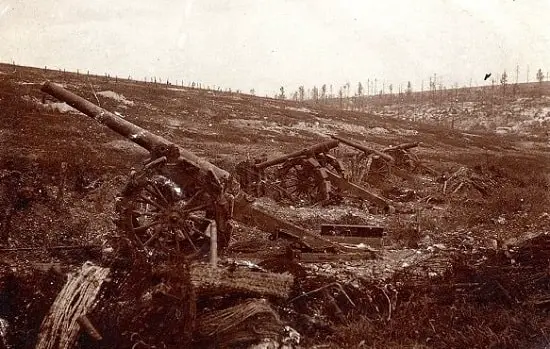
The war of attrition represents an attempt to crush an adversary’s capacity to wage war by destroying its military assets by any means possible.
During World War 1, there was an expectation that the enemy could be won over through this exact type of warfare.
The expectation resulted in mass production of weaponry and ammunition, hoping that the enemy’s weapons would be exhausted subject to ineffectual exchanges.
The hope proved futile as the opposite parties had also ramped production.
Later, the war of attrition shifted the focus from military resources to human lives.
During World War 1, one of the best-known attrition warfare instances has to be on the Western Front.
With both the forces in their strong defensive positions, the only way to defeat the enemy was through repeated attacks until they collapsed.
The Battle of Verdun on the Western Front was one of the most destructive wars of attrition.
Fought between the French and the Germans from 21st February 1916 to 18th December 1916, the war was fought to attack and grind the enemies head-on.
Erich von Falkenhayn, the second Chief leader of the German General Staff, later asserted that his strategy at Verdun was not to take over the city but rather to shatter the French army and precisely to “bleed France dry.”
One of the significant factors resulting in World War 1 was attrition warfare, both military resource-wise, and human resource-wise.
The advent of American troops in large numbers and the collapse of esteem and production on the German home front due to an efficient naval blockade were among the significant reasons that resulted in the termination of the war.
8. Dominance of Artillery warfare as a result of improvised and highly lethal artillery

During the first world war, artillery attained a new significance level on the battlefield. There was a remarkable development in artillery warfare as the artillery was now capable of firing highly explosive shells further away at a high fire rate.
In 1897, the French made significant advances in the functionality of artillery with the invention of long barrel recoil.
This meant that the artillery no longer had to be reset after firing a shot. This advancement made artillery warfare convenient to a great extent during the war.
Artillery was the main reason behind trench warfare during the first world war. The war was primarily highly defensive since the troops were no longer safe in the trenches due to heavy artillery bombardment.
The execution of the artillery barrage also prevented enemy troops from reaching the front lines safely and diverting the enemy from the attack scene.
Despite the introduction of newer weapons and military assets, artillery was the weapon that caused the highest number of casualties during the first world war. It was a critical threat to ground troops.
Despite being a significant weapon during World War 1, artillery warfare did have its disadvantages.
Communication issues between infantry and artillery and the expensive and time-consuming nature of artillery production were among the top drawbacks of artillery warfare.
7. Improvement in command and control during the waging of war

During the initial times of the war, comparatively primitive communication techniques were used.
The generals attempted to direct strategies and plans from the headquarters, many miles from the front line, through messages carried via runners, motorcycle couriers, and messenger dogs.
The realization that an effective and prompt communication method was required soon enough.
Existing technology didn’t prove to be of much help as radios were too bulky to carry, and field telephone lines were subject to being broken or eavesdropped upon.
The technical progress of radio continued through the war, and the radio-telephony was improved to perfection.
This improved communication of tactics and information led to many advantages during the waging of war. Airborne artillery spotting was highly supported with effective radio telephony entering the picture.
6. Major trench warfare as a consequence of artillery supremacy
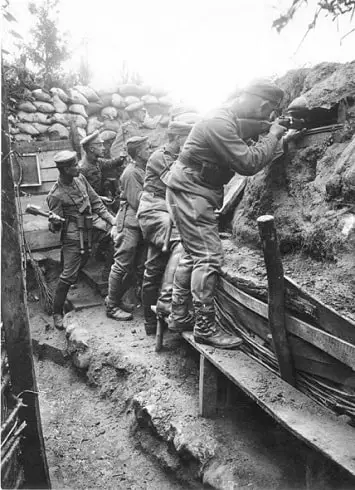
Trench warfare was majorly adopted and improved during the first world war. During the initial stages of the war, trenches were vulnerable and straightforward.
Eventually, subject to the heavy casualties from highly fatal artillery shells, the early trenches that lacked traverses were switched to more profound, more sophisticated, and protected channels.
Trenches were designed in such a way to prevent both artillery bombing and mass assault by the infantry to a considerable extent.
They were dug deep, at least about 8 ft, and secured with the help of steel, concrete and barbed wires.
Transverse adaptation was implemented, and zigzag trenches were dug to increase the difficulty of detecting trench troops and protection from artillery shells and grenades.
Due to the improvement in trench warfare with enhanced security, tunnel warfare also came into action since it was tougher to detect the entrenched enemy troops.
Tunnel warfare proved to be the most fruitful to the Germans as an automatic consequence of their skilled tunnel-digging pioneers and highly efficient sound equipment.
5. Infantry weapons used primarily during the war
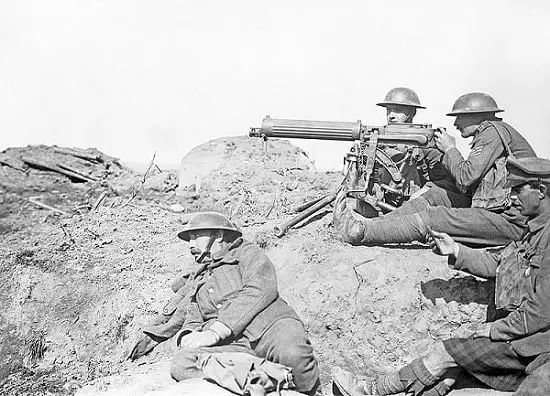
The primary infantry weapons were expectedly the rifle and bayonet. Rifles that could fire up to ten or more minute rounds were used. Initially, other weapons got less attention.
As trench warfare was initiated majorly, the focus was also shifted to grenades, deemed relatively ineffective initially.
The military strategists hastily started the improvisation of hand grenades that would prove to be one of the most used infantry weapons.
Grenades effectively attacked entrenched enemy troops when a trench was discovered without the attacking soldier having to expose himself to fire.
The British Mills bomb was among the hand grenades that had widespread use during the first world war.
Machine guns were also adopted as infantry weapons during the first world war. These belt-fed guns could continuously fire for a substantial time if sufficient ammunition and cooling water were provided.
In a stationary battle, machine guns protected by barbed wires were highly effective and resulted in mass casualties of the enemy troops approaching.
The American troops were also using trench guns as a significant infantry weapon. Despite having a limited range, the shot-shell used in a trench gun had escalated hit probability compared to any other small arm.
This feature of trench guns increased their popularity among U.S. combatants.
Flamethrowers were not among the primary weapons used during World War 1. This was due to the relatively shorter flamethrower range that would leave the soldiers operating it exposed and at risk.
They were used in some instances here and there to obliterate enemy troops from their trenches.
4. Pre-eminence of railways over any other means of transport
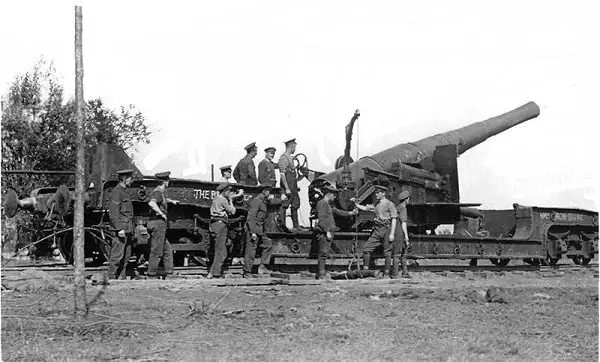
Railways can be considered the most substantially used transportation line during the first world war. They were constantly moving to transport troops and military equipment to the war zone.
This means of transport significantly supplied necessities and resources to the front line throughout the war.
Deployments were made via railways, during which trains would transport many army troops and other service members to the front line or to a destination where they would board boats to reach the front line.
Ambulance trains also entered the scene, transforming themselves into mobile hospitals that would move wounded soldiers from the place of war, provide the required medical attention, and conduct emergency surgeries mid-journey.
These trains had moved nearly 6 million injured troopers during the first world war.
An underground railway built in Richborough, Kent, known as the Secret harbor, also proved to be quite effective in transporting resources and equipment essential for the war.
Despite being subject to tactical bombing and shell fire, the prime use of railways was observed during World War 1.
3. Use of tracer ammunition for the first time in a war
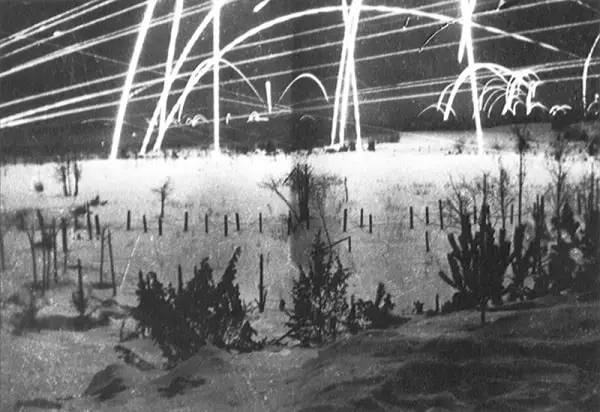
Tracer bullets were first built, used, and improvised during World War 1. The use of tracers greatly supported gunners during night-time firing as it helped display the path of their shots and adjust it to the enemy positions.
The initial tracer bullets were not so effective as they demonstrated an inconsistent path that only lasted 100 meters.
In 1916, tracers were improved to successfully leave a bright phosphorescent trail with a more extended range.
Apart from significantly contributing during night-time firing, these small arms ammunition were also famous for their use in ‘balloon-busting’ the airships used for spotting and bombing.
These were significantly utilized against the German zeppelins to ignite the hydrogen and destroy the airships.
2. Advancement in the air traffic control system
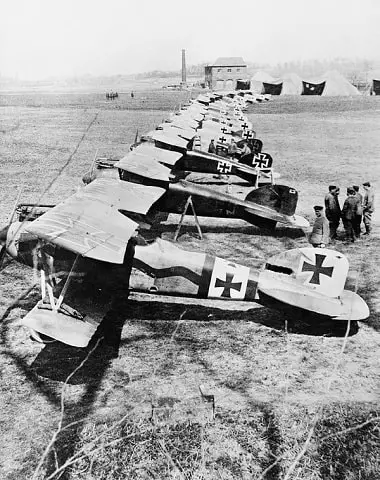
During the initial times of World War 1, air warfare had a significant setback of pretty much the existence of any direct communication between ground operators and pilots after an aircraft took flight.
This led to the aircraft troop being isolated and vulnerable to any ground risk they could not detect.
The starting phase of the development of communication and control in aircraft resulted in the introduction of radiotelegraph messages sent by technicians at the ground level to the aircraft in flight over a distance of 140 miles.
The exchange could be made between the aircraft in flight as well.
This technology was improved over time as the war went on. Eventually, in 1917, an actual voice message was successfully transmitted from a radio in an aircraft in flight to ground-level operators.
This was a beneficial upgrade in the scenario of air warfare during the first world war.
1. Rise of depth charges and hydrophones in an attempt to minimize submarine terror
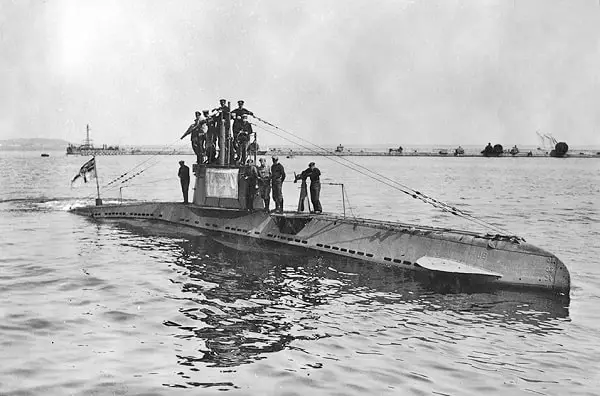
The dominance that submarines, specifically the German U-boats, created in sea warfare forced the Allies to figure out effective ways to control and minimize this dangerous supremacy.
One such anti-submarine warfare weapon was the depth charge.
It was designed to go off at a certain depth after being dropped in the water source and cause the submarines to face significant damage subject to the explosion.
These were undoubtedly used and were a successful weapon in destroying U-boats through detonation.
Another introduction to support anti-submarine warfare was hydrophones.
These devices were invented in 1914 following the Titanic disaster to locate any approaching icebergs.
During the great war, an improved version of the hydrophone was used to detect an approaching submarine’s distance and direction, and it claimed its first U-boat victim in 1916.
Later on, it was perfected in such a way to be able to detect U-boats from about 25 miles away.
Conclusion
During World War 1, the technology seen in use was impacted by the rapidly progressing tech development. Improvisations and innovations were constantly being made in various aspects of the war.
These developments continued intensely even during the time of war. Measures and counter-measures were continually tested and strategized to strengthen one’s probability of triumph.
Weapons for various war areas also saw significant improvements that led to inefficient warfare during the initial stages of the war.
These weapons were certainly enhanced to the next level by World War 2.
The first world war, also known as the great war, was indeed one of the most destructive events in the history of the world.
The technology used during the war significantly contributed to the deterioration caused by the war.
